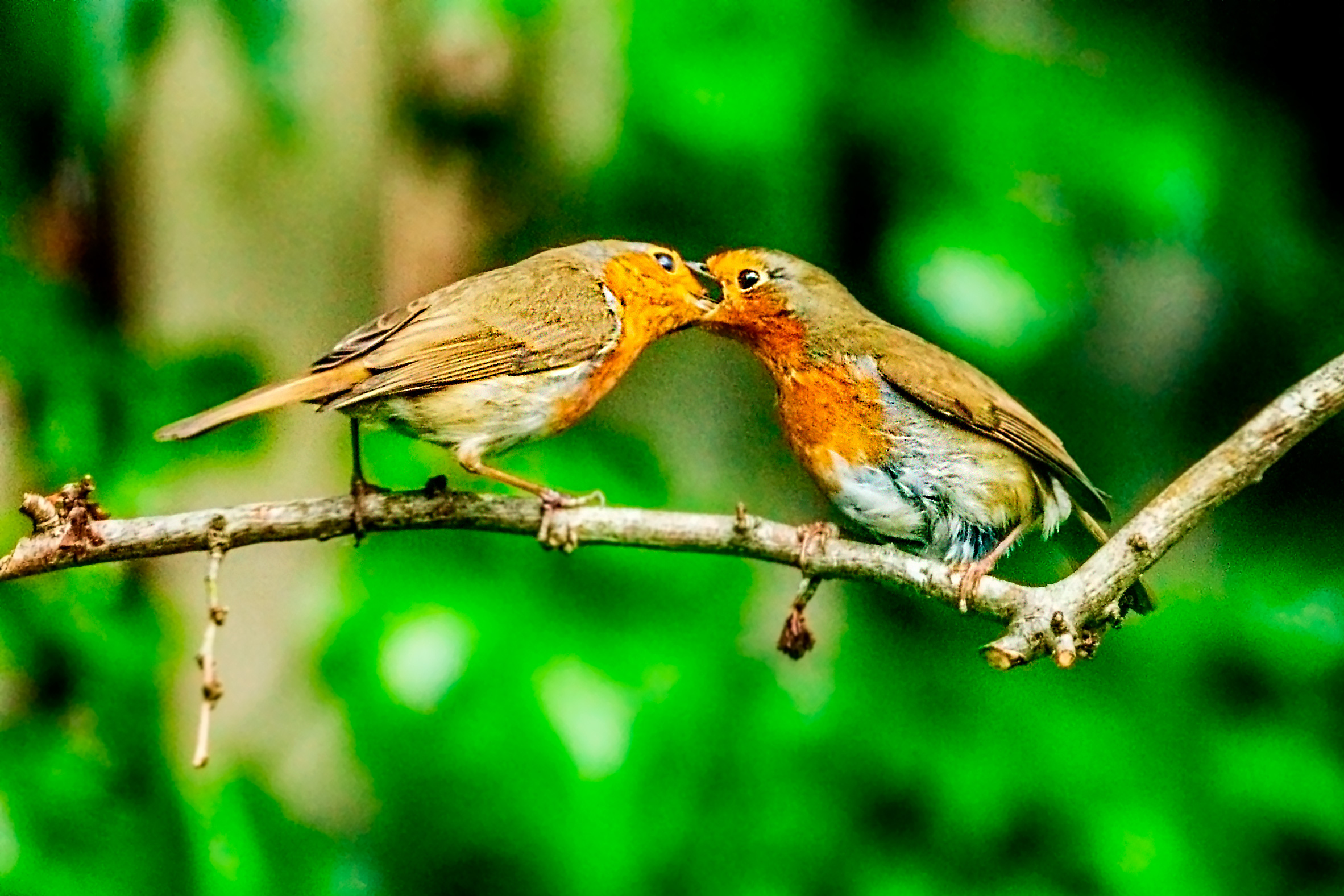What behaviour are these Robins (see above) demonstrating?
Chris Shaw
We love these photos of Robins displaying courtship feeding! This is a behaviour which takes place between two adult birds; the female uses a sharp, monosyllabic call to encourage the male to offer her food. Although called courtship feeding, this is most common when the female is developing, laying and incubating her eggs, rather than during the courtship stage. The male can supply her with more than a third of her total food intake during the nest-building and egg-laying period, which provides her with essential nutrients.
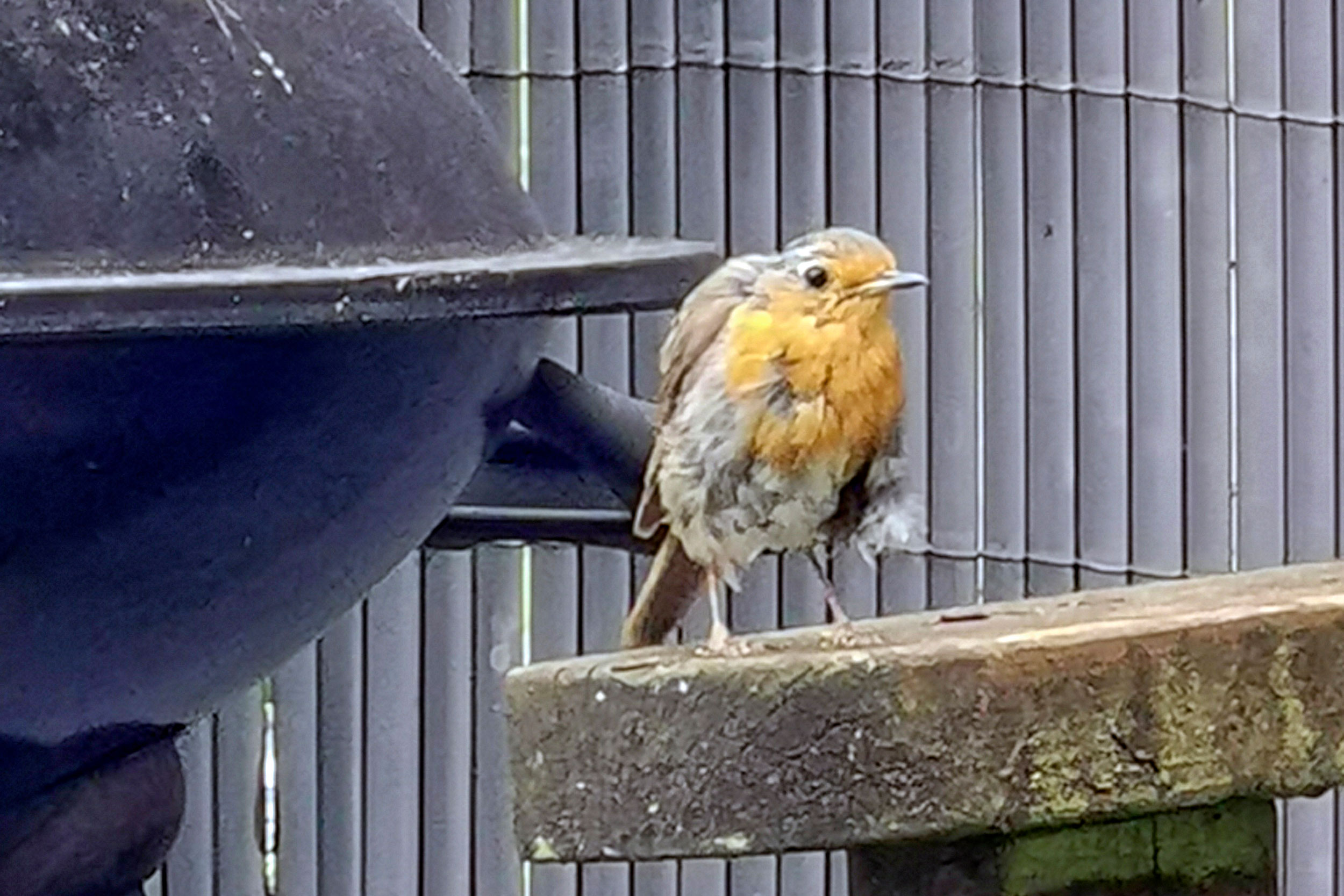
Robin with a perforated air sac. Photo: Lauryn Donnelly
Why are air sacs important for birds and can they become damaged?
James Saliba
The avian pulmonary system uses ‘flow-through ventilation’, relying on a network of air sacs to move air through the lungs. These thin-walled structures can rupture following predator attack or collision, for example, or this can occur spontaneously. Perforations may cause balloon-shaped swellings if air leaks out and accumulates under the skin. These vary in size. In many cases, birds recover with air sacs healing efficiently.
In severe cases, large swellings might interfere with eating or flying. Reporting such cases at gardenwildlifehealth.org helps to monitor diseases.
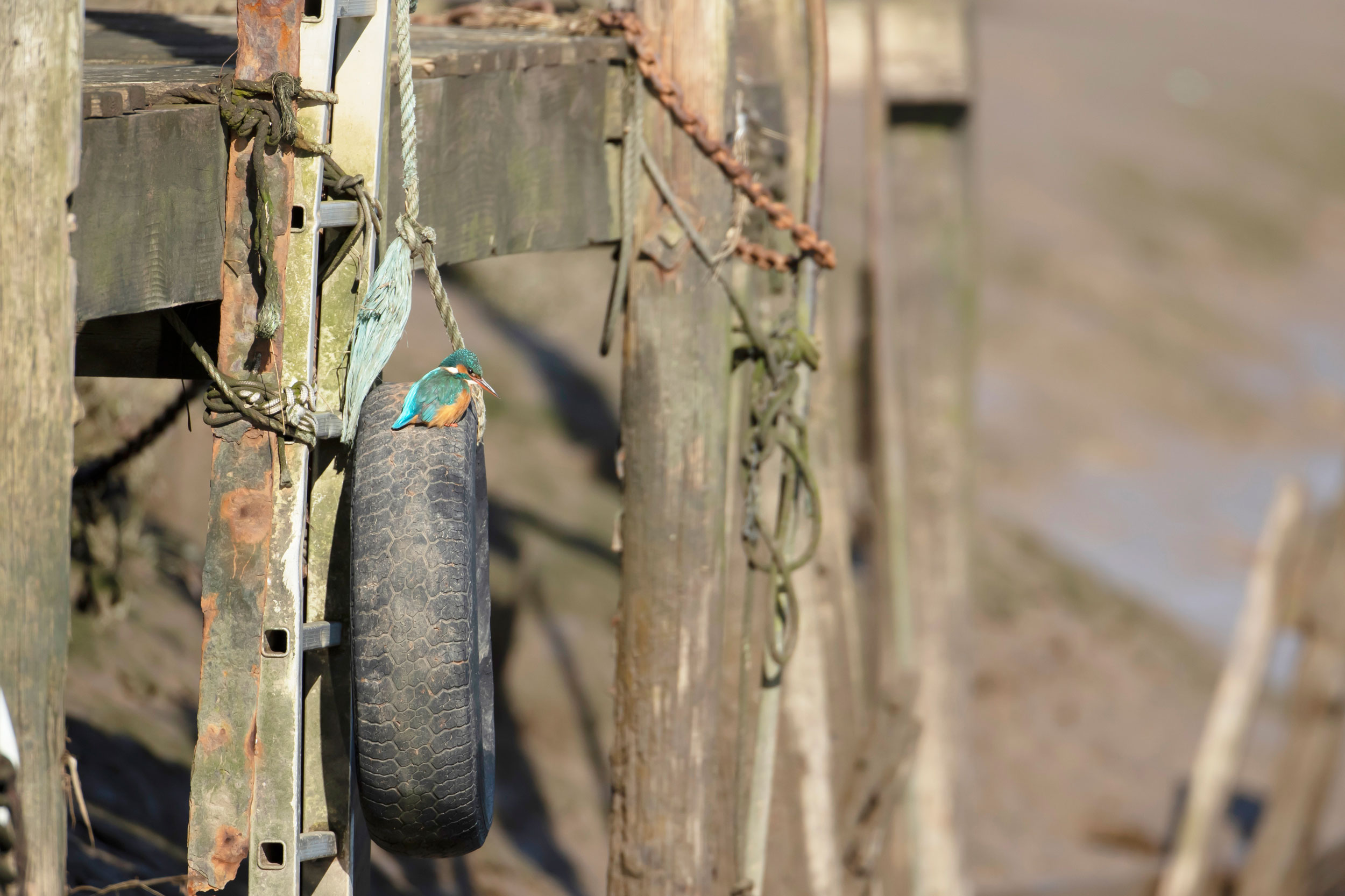
Kingfisher. Photo: Kevin Sawford
Have you ever wondered if Kingfishers are found on the coast?
Dillon Murphy
Whilst Kingfishers are typically found inland along streams, rivers and canals, during the winter they will sometimes also be seen at locations on the coast. Harsh winter weather can have a big impact on food availability. As a result, some Kingfishers move away from their breeding territories in the autumn and winter to coastal sites, such as estuaries and seashores, in search of food. Their movements can vary greatly between years depending on the severity of the weather.
Whilst they mainly eat freshwater fish, they do also go for marine fish, and even crustaceans and molluscs!
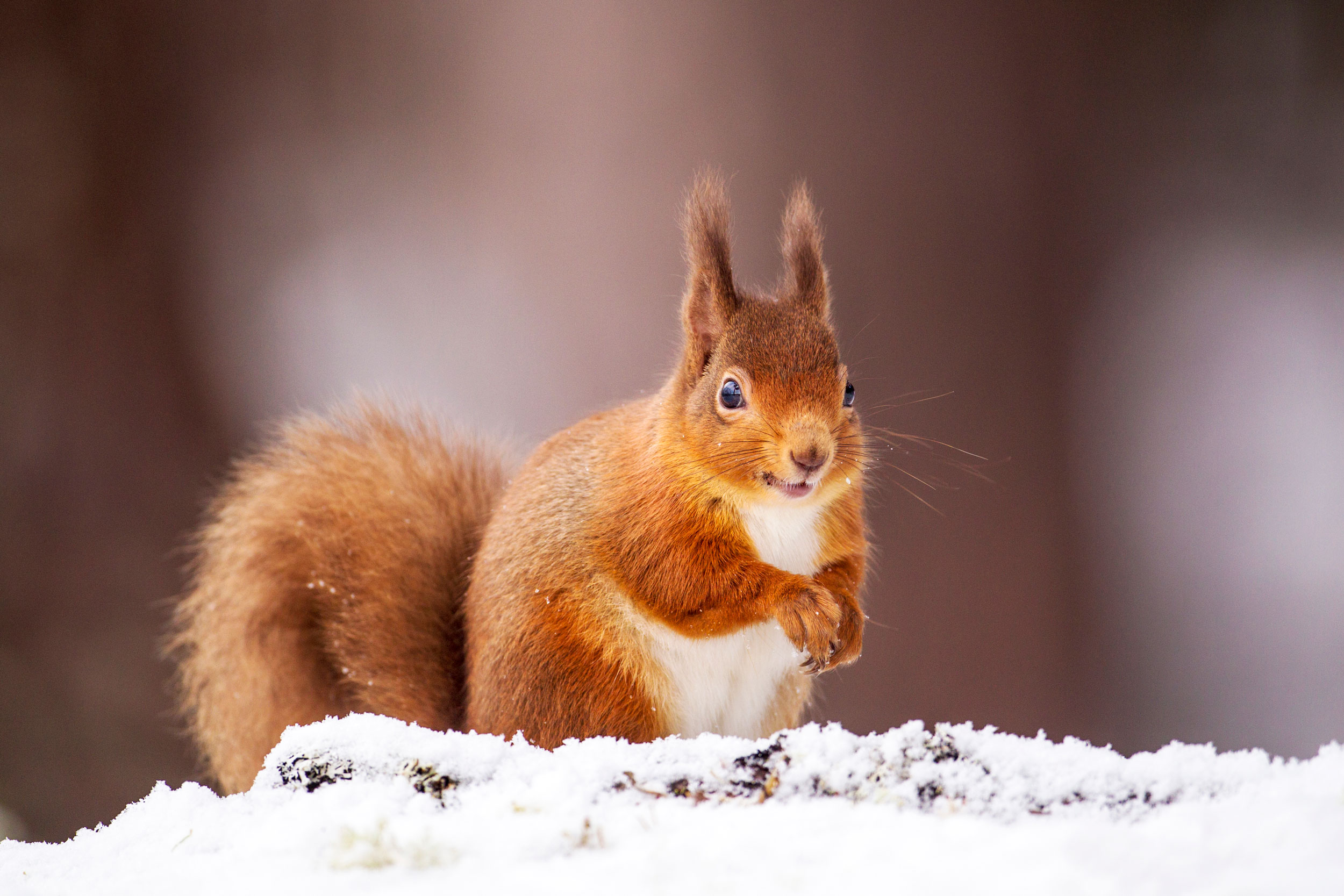
Red Squirrel. Photo: Jules Cox
Do Red Squirrels hibernate?
Johnny Morillo
Interestingly, Red Squirrels do not hibernate! Instead, they are just less active during the winter period because of the extra energy required to keep warm. They make use of the food they have stored and buried, such as nuts, seeds and berries, to help sustain themselves until spring. You can try and catch a glimpse of these beautiful mammals at RSPB Brading Marshes on the Isle of Wight.
Red Squirrel enjoying a nut. Video: RSPB (rspb-images.com)
Guillemot or Razorbill?
Guillemots and Razorbills belong to the auk family and are two of the UK’s most commonly seen auks during winter. Auks are heavy-bodied seabirds with short tails, small, narrow wings and short legs set far back on the body.
Being both medium-sized and similar in colour, Guillemots and Razorbills can cause confusion at this time of year when in winter plumage. Both of these birds are Amber-listed, although breeding populations are significantly different, with 950,000 pairs of Guillemots and 165,000 pairs of Razorbills.
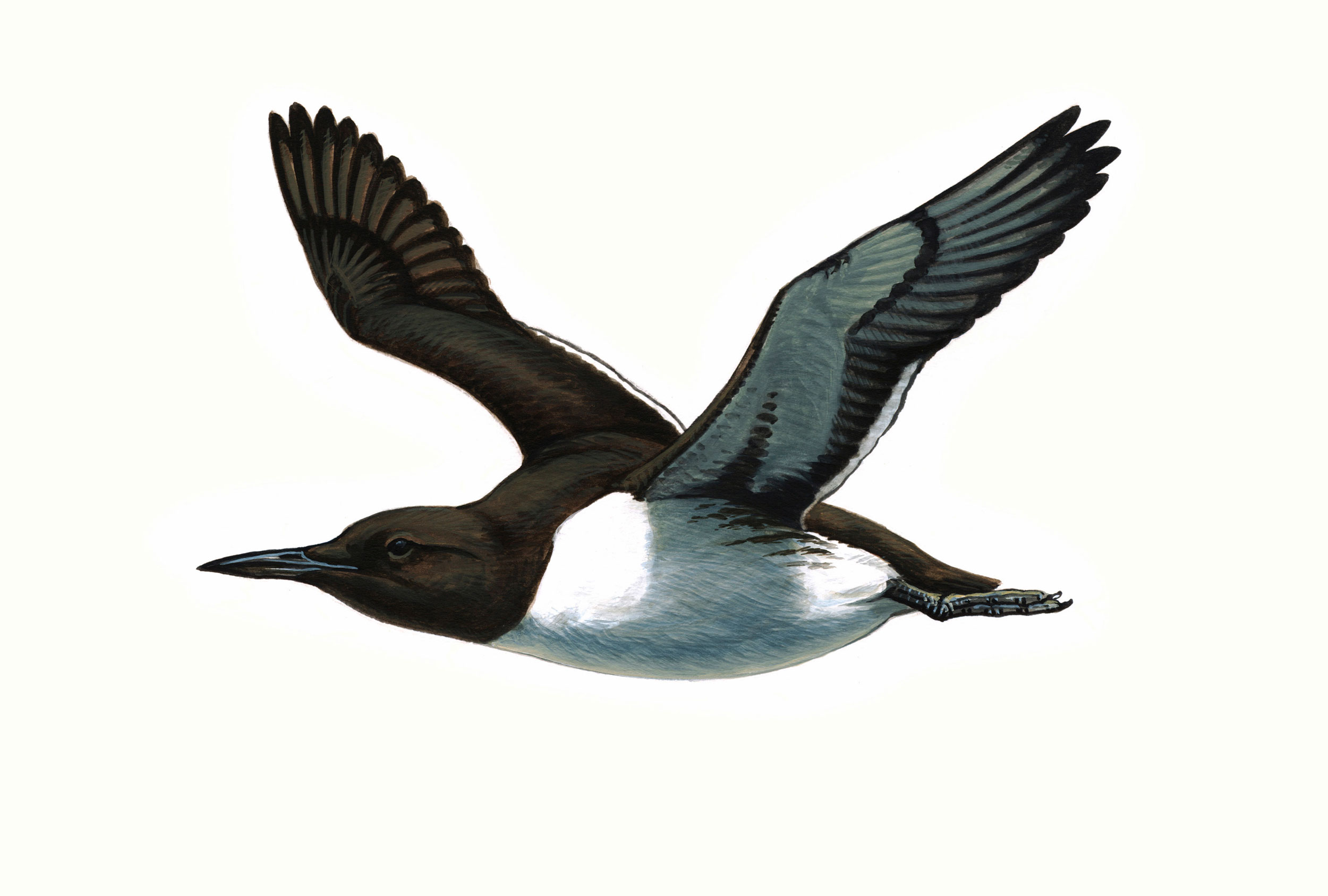
Guillemot in summer. Illustration: Mike Langman (rspb-images.com)

Guillemot in winter. Illustration: Mike Langman (rspb-images.com)
Guillemot
• Slim and narrow shape
• Chocolate-brown and white plumage
• Long, thin, pointed beak
• Smoky, streaked flanks and underwings
• Projecting feet in flight
• In winter, the neck and side of the face become white
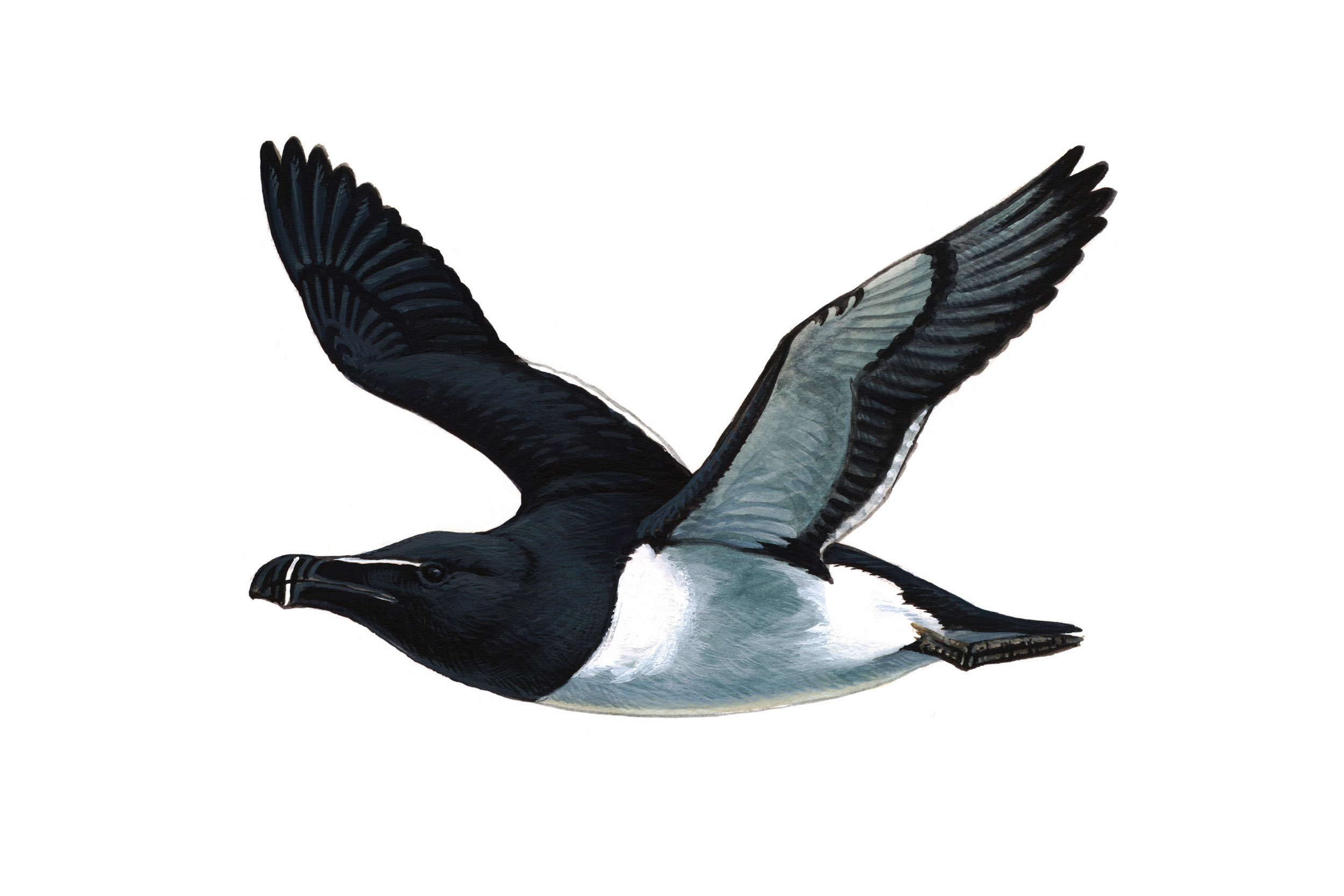
Razorbill in summer. Illustration: Mike Langman (rspb-images.com)
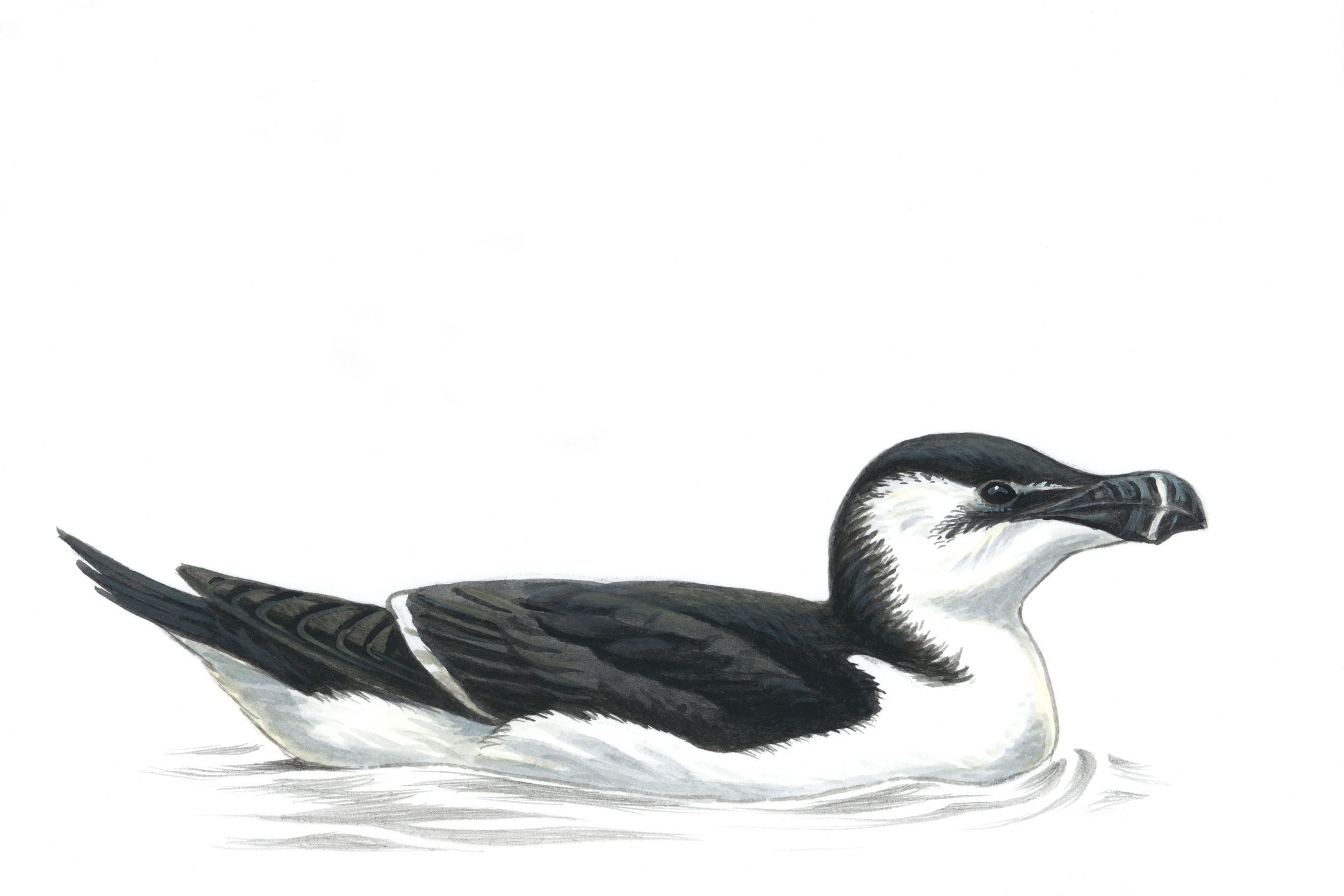
Razorbill in winter. Illustration: Mike Langman (rspb-images.com)
Razorbill
• Stocky shape
• Black and white plumage
• Short, thick, blunt beak with distinguishing white lines across tip
• Pure-white flanks and underwings
• Feet tucked beneath tail in flight
• In winter, the head becomes mostly white

Blue Tit gathering nesting material. Photo: Paul Sawer
What can I put out for nests?
Meredith Black
Great to hear you want to help nesting birds! Natural fibres and plant material can be placed in hanging baskets for birds to easily collect. These might include grasses or leaves from shrubs. Some birds, such as Starlings, will use moss raked from your lawn. Many species, including House Martins, Song Thrushes and Blackbirds, need mud to construct their nests so creating a small, muddy patch in your garden can support their efforts. Untreated wool is also favoured by many birds and can be purchased from the RSPB shop.
Please note
We do not advise putting out pet hair treated with anti-parasite medicines or human hair due to the risk of entanglement and the use of hair products that may be toxic to birds.
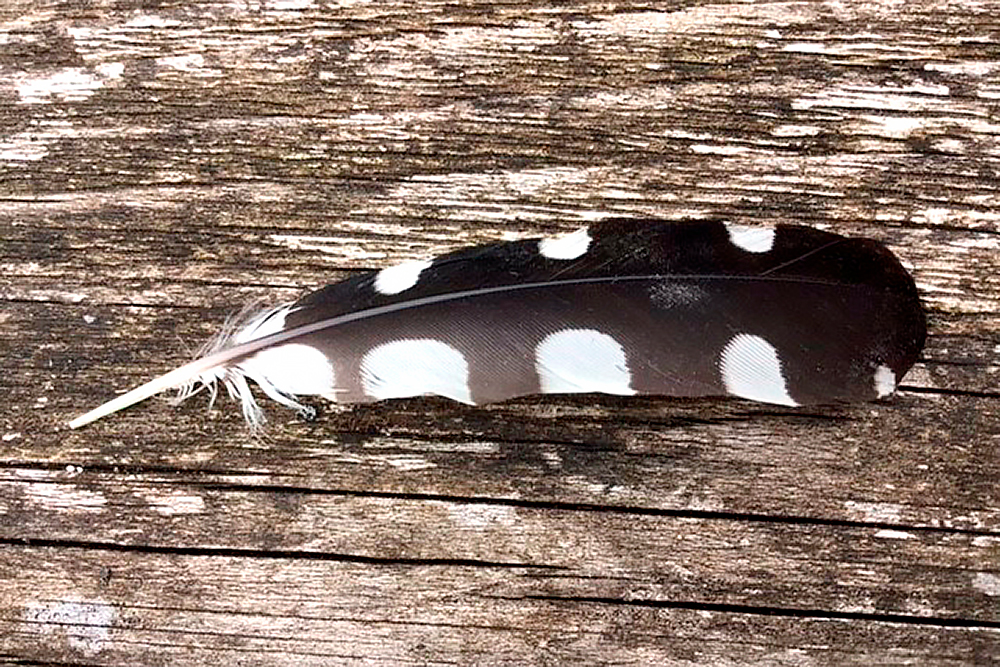
Great Spotted Woodpecker feather. Photo: Jane Jones
What is this feather from?
Jane Jones
What a lovely feather! Going by the size (8cm) and patterning, this looks to be a secondary feather (a flight feather grown closer to the body) from a Great Spotted Woodpecker. Both their primary and secondary feathers are black with large white spots, but the size of the feather points to it being a secondary feather.
Great Spotted Woodpecker foraging for food for its chick. Video: RSPB (rspb-images.com)
How to…
Help amphibians and reptiles during winter
Whilst we might see reptiles basking in the sun or frogs hopping around a pond in spring and summer, they are usually hidden away during winter to hibernate from the cold. A hibernaculum is an underground home for amphibians and reptiles, made up of multiple chambers.
You can create one in your own garden by digging a hole (50cm deep by 1.5m wide) and filling it with logs, branches and rocks. Slot a few entrance tunnels (you can use offcuts of drainpipe) around the sides and cover with soil to create a mound. The entrance tunnels should be exposed and at ground level. This hibernaculum will provide the perfect shelter for a range of amphibians and reptiles over the colder months.
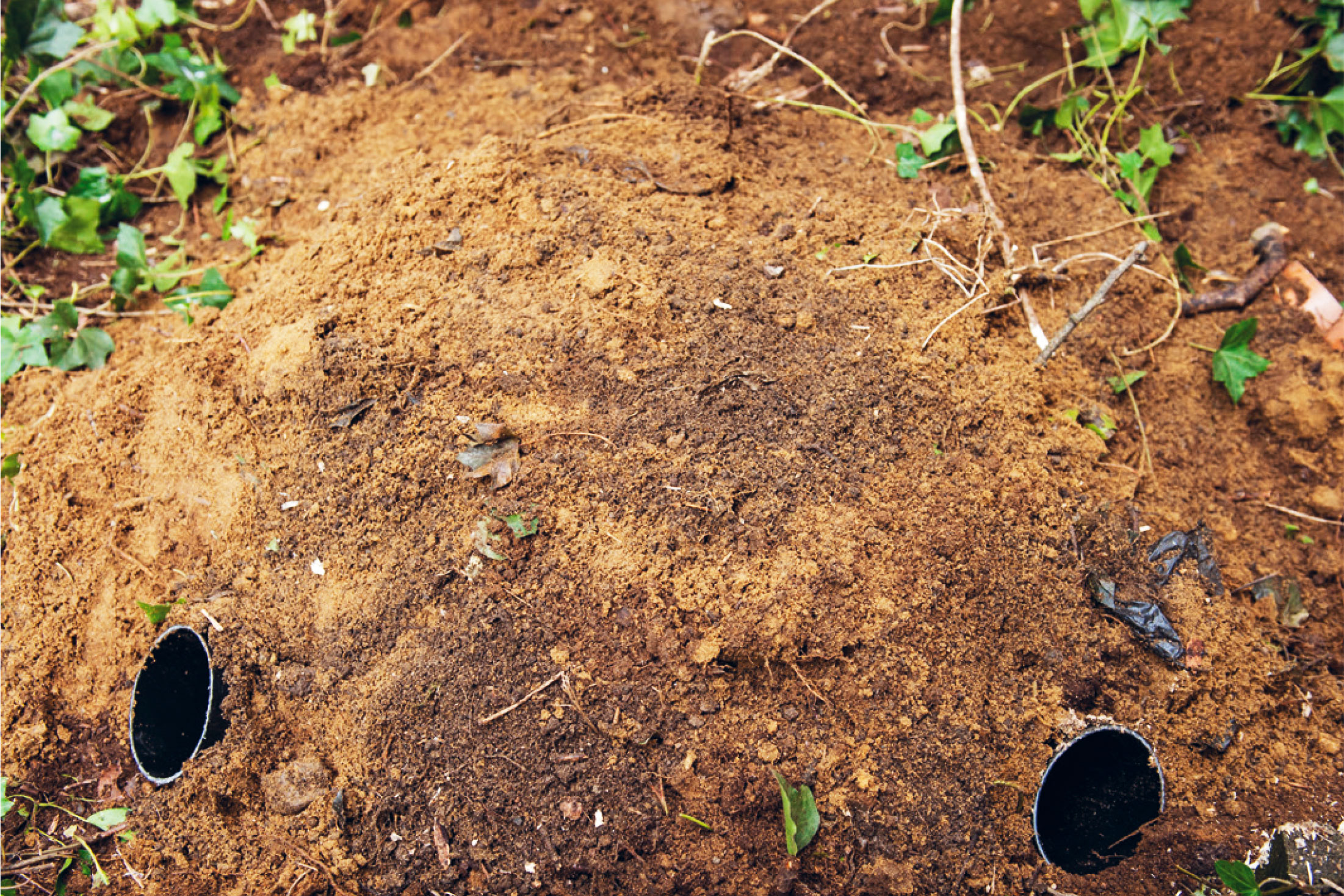
Hibernaculum. Photo: Nick Cunard
How to make a toad and frog house in your garden. Video: RSPB
You might also like
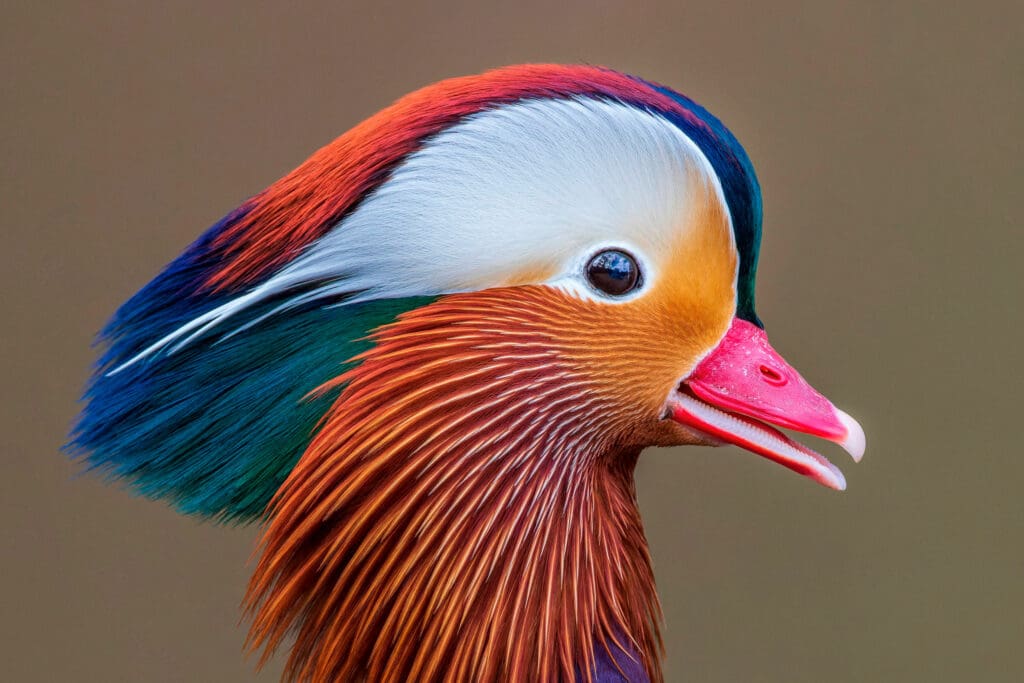
Your photos – winter 2023/spring 2024
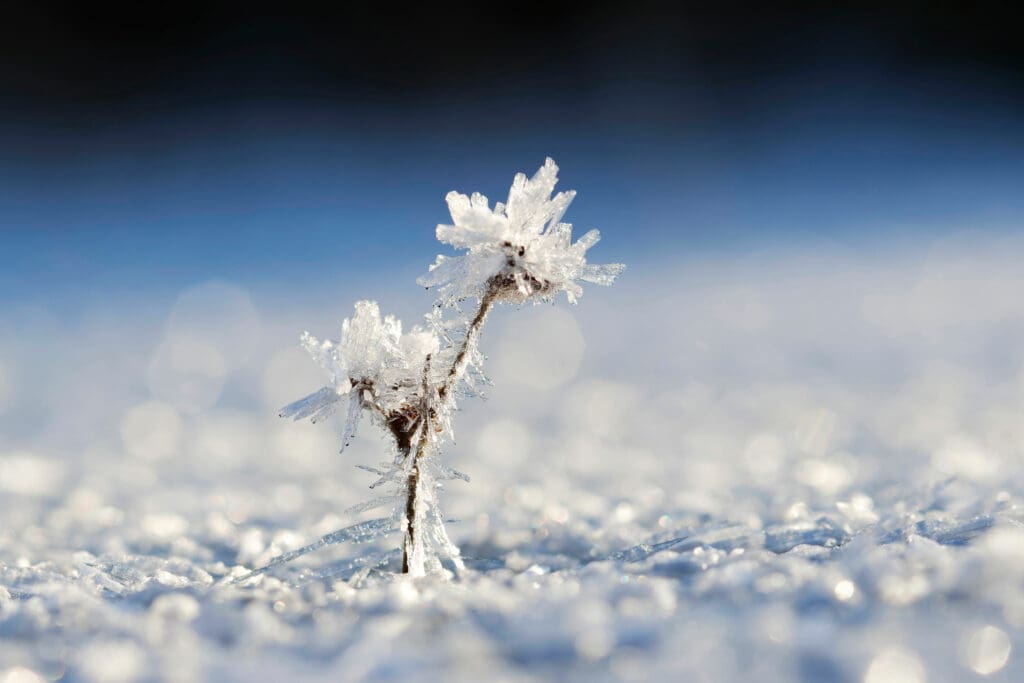
Under the ice


